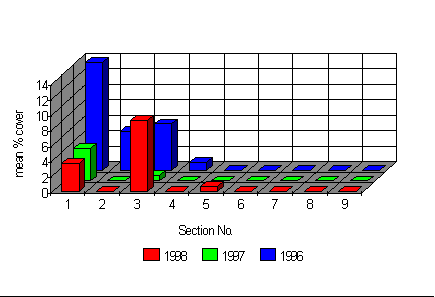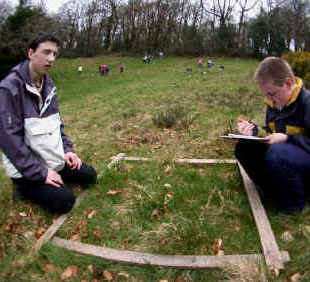|
The
Woodland Education Centre |
|
|
The
Woodland Education Centre |
|
Ecological Surveys 1996 - 1998
The Effects of Management -
Brush cutting
| The only significant effect of the timing of
brushcutting appeared to be on Bluebells growing on the project site as a woodland
remnant. The Bluebells had declined in sections 2 and 4, both of which are cut in the
spring. The distribution of most other species on the site showed little relationship to the timing of the brush cut. |
 |
Bluebells were initially
found covering all of sections 1 - 4 (Figure below). However, they declined in abundance
from 1997 - 1998, except in section 3. Although they still occurred in sections 2 and 4 , their abundance appeared to have been greatly reduced and they did not occur in any of the samples taken in 1997 and 1998. Sampling takes place at a time of year when the Bluebells have already died back, so it should be appreciated that the samples do not accurately reflect the true abundance of the Bluebells. |
 |
The distribution of Bluebells on
the project site. |
| The apparent reduction in
Bluebells in sections 2 and 4 is likely to be a result of the management regime in these
two sections. Sections 2 and 4 are duplicates of the same management regime which is a
spring brushcut. In the spring, the Bluebells are just regenerating after the winter. They use up reserves stored in underground bulbs to produce foliage and then the characteristic flowers. Cutting the bluebells before they have had time to replenish the reserves in the bulbs after flowering is likely to lead to their gradual elimination in these areas. |
 |
For an |
Continue to the effects of frequency of brushcutting
Ecological Surveys 96 - 98 |